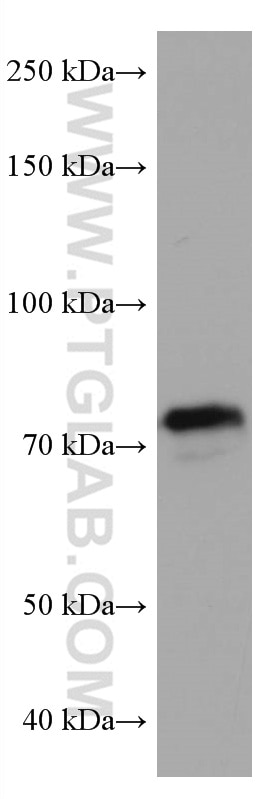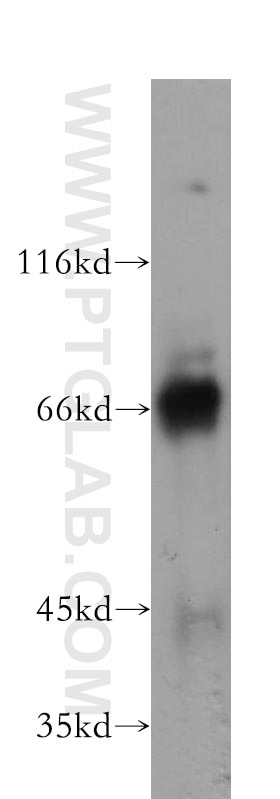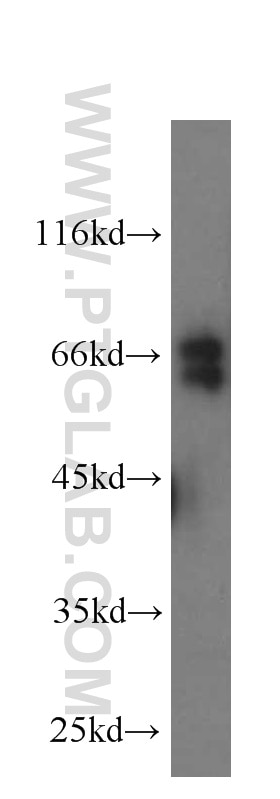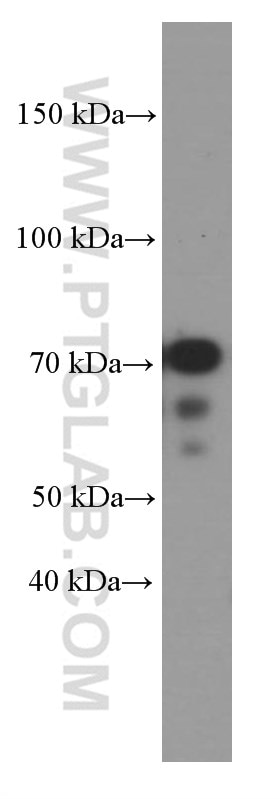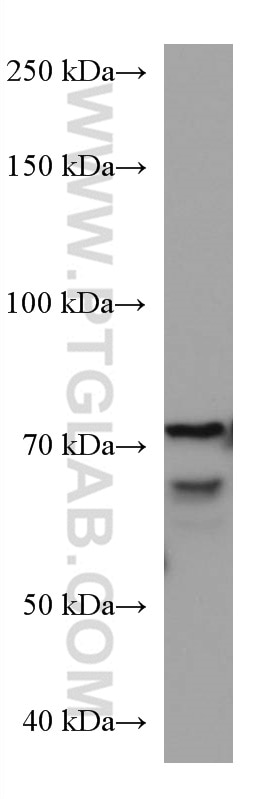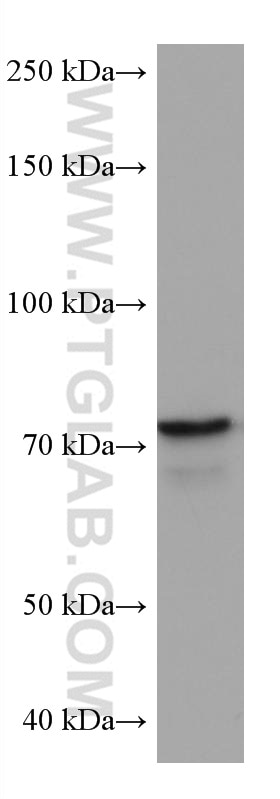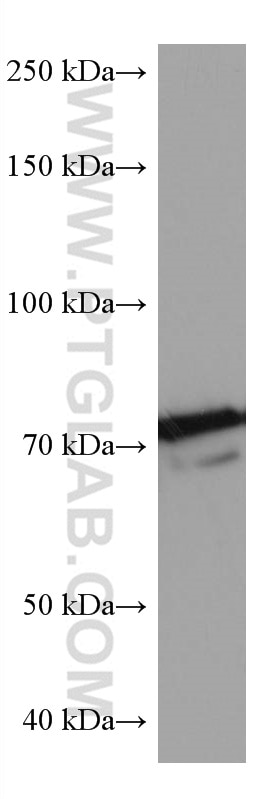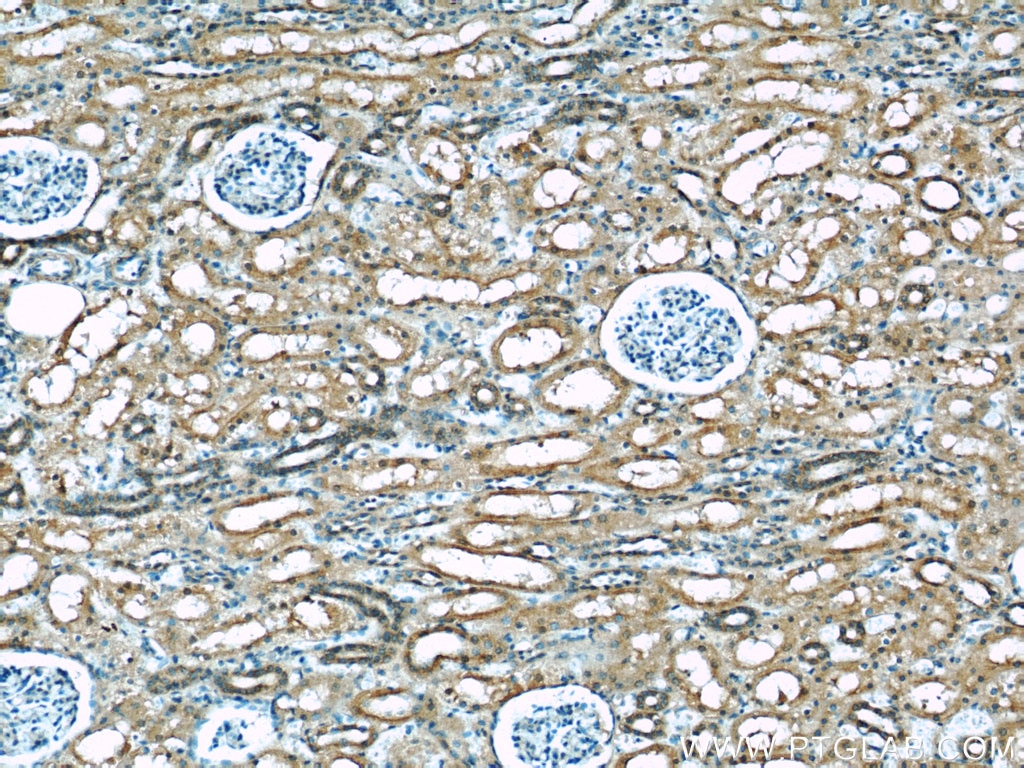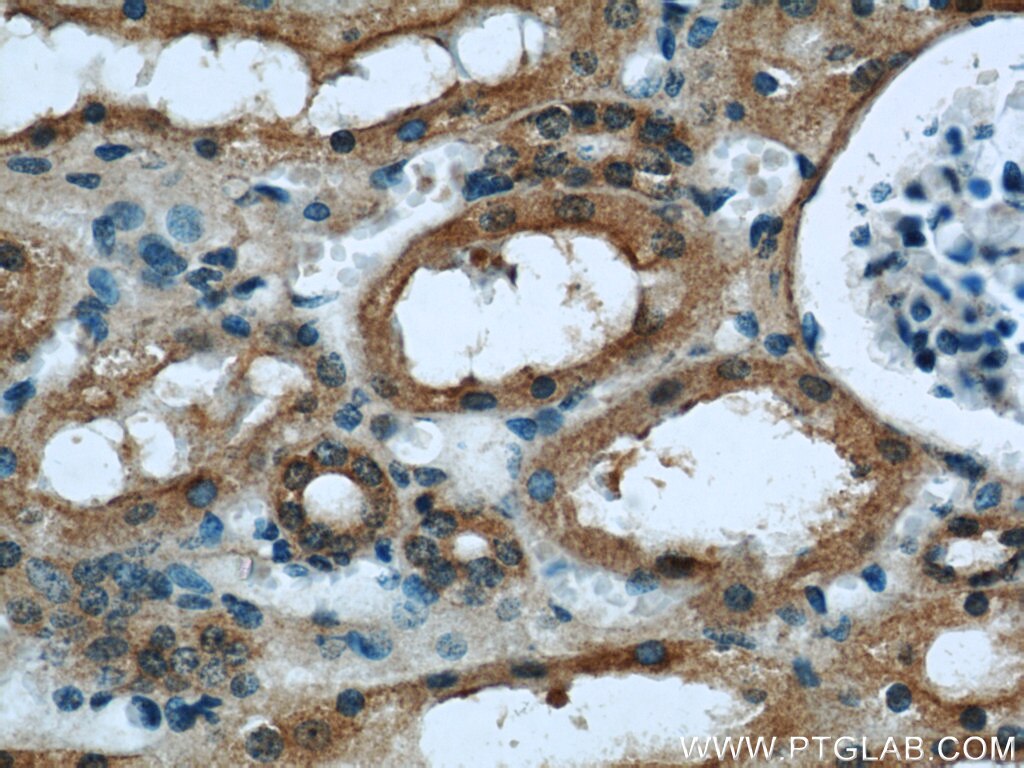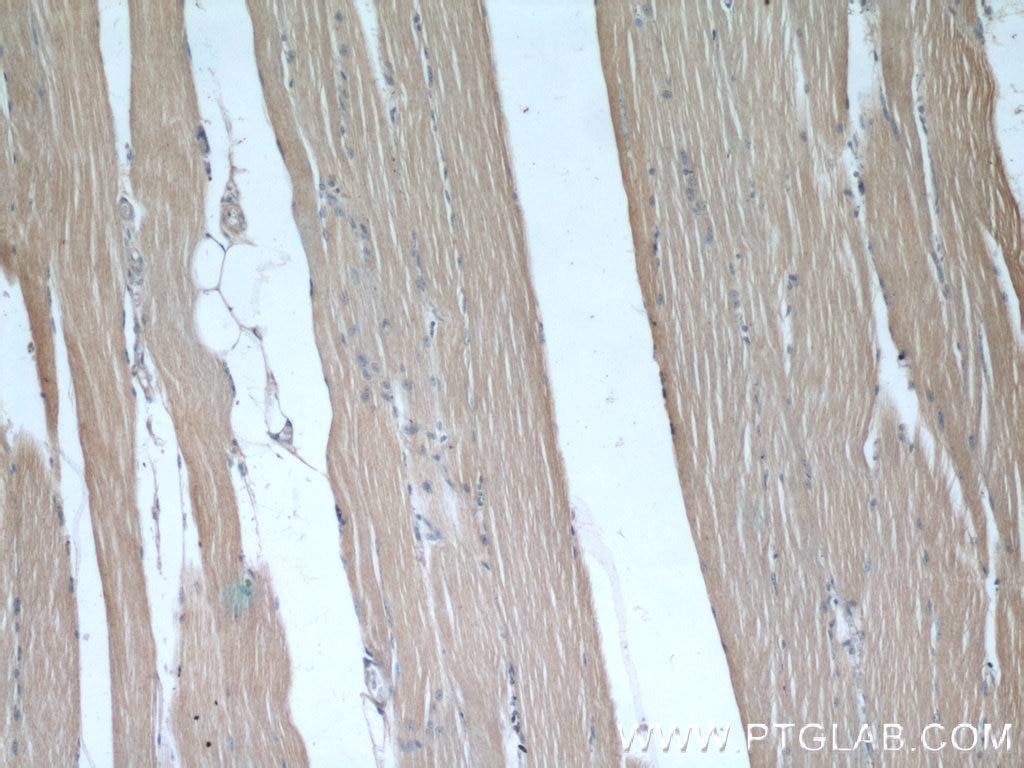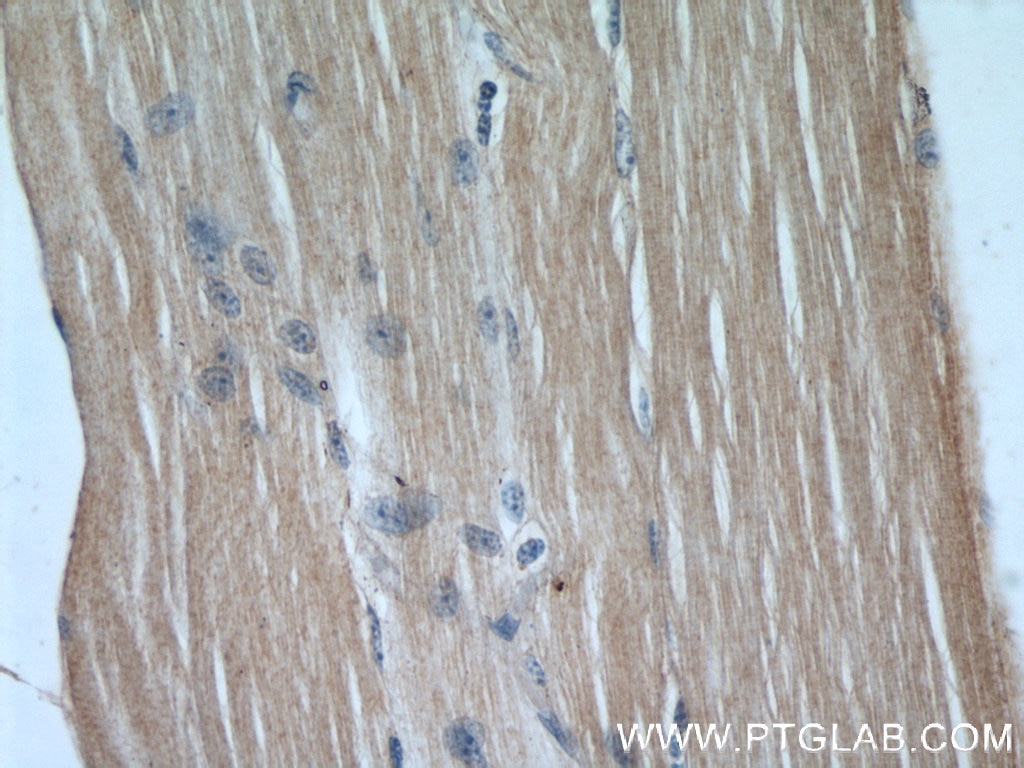- Phare
- Validé par KD/KO
Anticorps Monoclonal anti-KEAP1
KEAP1 Monoclonal Antibody for WB, ELISA
Hôte / Isotype
Mouse / IgA
Réactivité testée
Humain, rat, souris et plus (2)
Applications
WB, IHC, IF, IP, CoIP, ELISA
Conjugaison
Non conjugué
CloneNo.
4G10H9
N° de cat : 60027-1-Ig
Synonymes
Galerie de données de validation
Applications testées
| Résultats positifs en WB | cellules 4T1, cellules HeLa, cellules HSC-T6, cellules Jurkat, cellules MCF-7, cellules NIH/3T3 |
Dilution recommandée
| Application | Dilution |
|---|---|
| Western Blot (WB) | WB : 1:1000-1:4000 |
| It is recommended that this reagent should be titrated in each testing system to obtain optimal results. | |
| Sample-dependent, check data in validation data gallery | |
Applications publiées
| KD/KO | See 3 publications below |
| WB | See 114 publications below |
| IHC | See 8 publications below |
| IF | See 21 publications below |
| IP | See 3 publications below |
| CoIP | See 3 publications below |
Informations sur le produit
60027-1-Ig cible KEAP1 dans les applications de WB, IHC, IF, IP, CoIP, ELISA et montre une réactivité avec des échantillons Humain, rat, souris
| Réactivité | Humain, rat, souris |
| Réactivité citée | rat, Humain, porc, poulet, souris |
| Hôte / Isotype | Mouse / IgA |
| Clonalité | Monoclonal |
| Type | Anticorps |
| Immunogène | KEAP1 Protéine recombinante Ag0779 |
| Nom complet | kelch-like ECH-associated protein 1 |
| Masse moléculaire calculée | 624 aa, 70 kDa |
| Poids moléculaire observé | 60~70 kDa |
| Numéro d’acquisition GenBank | BC002930 |
| Symbole du gène | KEAP1 |
| Identification du gène (NCBI) | 9817 |
| Conjugaison | Non conjugué |
| Forme | Liquide |
| Méthode de purification | Précipitation de l'acide caprylique/du sulfate d'ammonium |
| Tampon de stockage | PBS with 0.02% sodium azide and 50% glycerol |
| Conditions de stockage | Stocker à -20°C. Stable pendant un an après l'expédition. L'aliquotage n'est pas nécessaire pour le stockage à -20oC Les 20ul contiennent 0,1% de BSA. |
Informations générales
Kelch-like ECH-associated protein 1 (KEAP1) is a negative regulator of nuclear factor erythroid 2-related factor 2 (Nrf2), a transcription factor governing the antioxidant response.
What is the molecular weight of KEAP1 protein? Are there any isoforms of KEAP1?
The molecular weight of KEAP1 protein is 70 kDa. The KEAP1 gene gives rise only to protein isoforms, but mutations of KEAP1 protein have been found in various cancer types.
What is the subcellular localization of KEAP1?
KEAP1 resides in the cytoplasm, where it binds to Nrf2, targeting it for degradation and preventing translocation of Nrf2 to the nucleus.
How does KEAP1 control Nrf2 levels? Is KEAP1 post-translationally modified?
KEAP1 is rich in reactive cysteine residues, whose thiol groups play a role in binding to CUL3 and the polyubiquitination of Nrf2, which leads to degradation of Nrf2 via the proteasome system. During oxidative stress, electrophiles and reactive oxygen species (ROS) modify the KEAP1 thiol groups, reducing the affinity of KEAP1 to CUL3 and the stabilization of Nrf2. Nrf2 then translocates to the nucleus, where it binds to the antioxidant responsive elements (AREs) and induces the expression of antioxidant proteins (PMID: 16354693).
How to measure oxidative stress using KEAP1 and Nrf2 proteins as a readout
Under basal conditions (unstressed cells), a detectable KEAP1 protein level is observed. Oxidative stress modifies KEAP1 protein activity by increasing the Nrf2 protein levels. This can be measured, for example, using western blotting (PMID: 27697860). KEAP1 protein levels are not altered by oxidative stress.
What is the role of the KEAP1-Nrf2 pathway in health and disease?
The KEAP-Nrf2 pathway plays a vital role in redox homeostasis and cryoprotection. Inhibition of KEAP1 activity leads to the activation of Nrf2 and increase the response to oxidative stress and anti-inflammatory effects (PMID: 29717933). The activation of Nrf2 can be beneficial in the case of metabolic diseases, such as diabetes, as well as neurodegenerative diseases such as Parkinson's and Alzheimer's diseases. However, the increased activation of Nrf2 is also known to promote tumor growth and metastasis. Mutations in both KEAP1 and Nrf2 were found in various solid tumor types.
Protocole
| Product Specific Protocols | |
|---|---|
| WB protocol for KEAP1 antibody 60027-1-Ig | Download protocol |
| IHC protocol for KEAP1 antibody 60027-1-Ig | Download protocol |
| Standard Protocols | |
|---|---|
| Click here to view our Standard Protocols |
Publications
| Species | Application | Title |
|---|---|---|
ACS Nano Neutrophil Nanovesicle Protects against Experimental Autoimmune Encephalomyelitis through Enhancing Myelin Clearance by Microglia | ||
J Clin Invest FAM117B promotes gastric cancer growth and drug resistance by targeting the KEAP1/NRF2 signaling pathway | ||
Mol Cell KEAP1 E3 ligase-mediated downregulation of NF-kappaB signaling by targeting IKKbeta. | ||
J Clin Invest Identification of CD84 as a potent survival factor in acute myeloid leukemia | ||
Aging Cell Chaperone-mediated autophagy degrades Keap1 and promotes Nrf2-mediated antioxidative response. | ||
Cell Death Dis ΔNp63α promotes radioresistance in esophageal squamous cell carcinoma through the PLEC-KEAP1-NRF2 feedback loop |
Avis
The reviews below have been submitted by verified Proteintech customers who received an incentive for providing their feedback.
FH Hala (Verified Customer) (11-24-2021) | good
|
